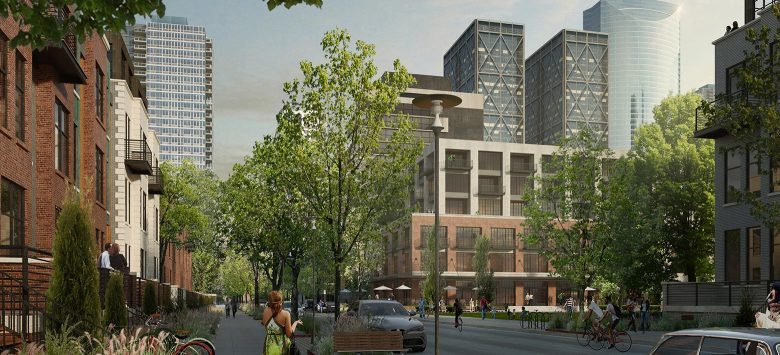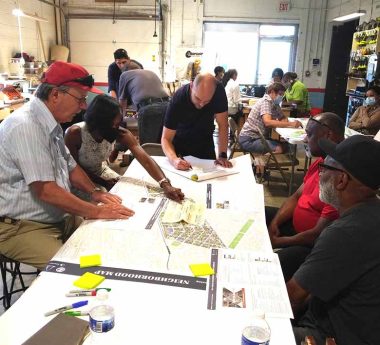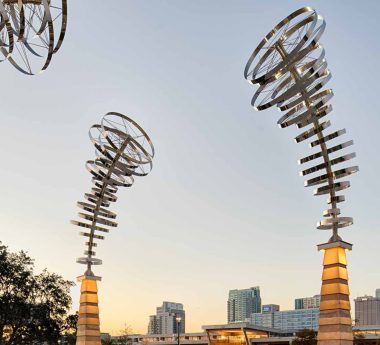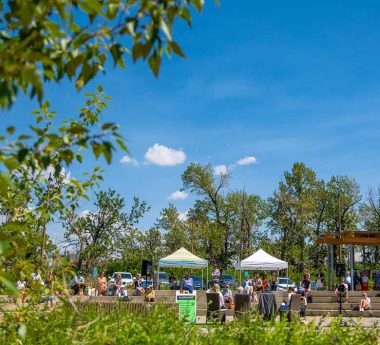Written by Mark Johnson, this article was originally published as a Forbes Business Council post on June 24, 2024.
Cities are always under scrutiny. New ideas and theories flow into the intellectual realm of thinkers trying to improve conditions or trying to make a name for themselves. Many of these assertions get a new label, disperse and fall flat.
Occasionally an idea sticks and leads to small changes, but the basic form, pattern and function of many cities has changed little since the advent of the automobile, despite decades of demands that cars not be the dominant residents of our streets. However, business leaders can play an important role in improving cities for their employees, customers and communities.

The American City
American cities are unique in their dependence on the automobile for movement. Many theorists attribute this to our love of the car, but the reality involves many factors.
In the late Victorian era, post-U.S. Civil War, the ills of industrializing cities became a prominent concern of city leaders and urban thinkers. Dirty air and water, dense living conditions—tenements and slums—became the subject of concern for writers of the day, including Jacob Riis in his landmark book How the Other Half Lives. The work of Riis and others—including physician John Snow, who identified a contaminated water pump as the source of London’s deadly cholera outbreak—served as evidence that the poor health of city workers was often a result of contact with pollution and disease, and ultimately of inadequate urban infrastructure.
In his seminal suburban plan for Riverside, Illinois, landscape architect Frederick Law Olmsted proposed that people should live in green neighborhoods, out of the city, connected by trains to the city core. Later, British urban planner Ebenezer Howard proposed the concept of the “garden city,” which isolated different uses from one another, then connected them by trains, canals and roads.
From these early theories the concept of land use zoning emerged on the foundation idea that separation of uses was good for public health. Our suburbs were not designed only by the car; they were also designed by public health policy. The car helped us get from place to place once public health policy pushed those places apart.
The Covid-19 pandemic was another public health crisis that revealed basic flaws in city form and function. As the virus spread and communities isolated, suddenly, without warning and with little disagreement, our city spaces were too small, too disconnected, too hardened and too anonymous. People needed more room to move in an environment that offered space, fresh air, comfort and calm. Echoing Olmsted, many moved to spaces that offered an experience that emulates nature.
Many cities had to reconcile with the reality that they hadn’t planned for this, and some are still struggling with the impact of a population shift to the suburbs.
Building The Future
Access to nature can boost physical activity and improve mental and physical health. And while public health officials increasingly recommend strategies for getting active outside, I’ve noticed landscape architects are leading the way in designing nature-based solutions including urban trails, city parks and other green spaces.
Street-closing experiments around the world have shown that many people want and will use this space, and that cars can find other routes. It’s important for city planners to recognize that access to nature is a necessity for both human life and the health of the city. We need serious, long-term plans for every neighborhood to take a close look at the design of its streets, parks and other spaces and, where they’re lacking, to establish multiple interconnected routes—walking loops with many choices—that people can access by walking from home.
Public policy and urban planning both play a role, but to implement real change, I think the next step we must take is to introduce green pedestrian spaces at the micro-local level, block by block. Now is the right moment to take steps forward, as many cities face challenges like housing shortages and commercial vacancies yet are armed with post-pandemic lessons learned.
When new developments are proposed to meet housing needs, they can be integrated with open space and nature, and connected to the urban fabric with an active and engaging public realm that prioritizes health. These developments ultimately become the kind of places where people want to spend more time—the kinds of new developments that are quickly embraced by residents and policymakers alike.
How Business Leaders Can Help
And this is where we, as business leaders, come in—problem solvers and communicators who care about the health and wellness of our communities. Our neighborhoods need strong, collaborative, optimistic leaders to come together and ask the right questions in order to find the best solutions.
Get involved in your local neighborhood organization to bring a rational, mediating voice into the conversation. Use your negotiating skills to listen to both sides, and call attention to shared values as the basis for solutions. Recognize that the problem is not a single dimension.
It’s likely that your neighborhood was designed as a system to distribute cars to houses and apartments. Yes, convenience matters. But what about green spaces, trails, pocket parks, playgrounds and the other shared spaces that are valuable to everyone—that create real connections? Does your neighborhood have what it needs to support healthy outdoor living? Does it have access to nature? Is there a neighborhood plan that calls for a future that is rich with accessible places where people can walk, meet, gather or just relax? If not, you can be the catalyst to help show that if new development and growth is coming, it must come with ways to make life better for everyone.
When we redistribute the public realm from the car to people and to nature—from single-use open spaces into multiuse space that can accommodate diverse activities, and from large central parks to connected chains of small green neighborhood spaces—we have the opportunity to regenerate our cities as places of people and health, not traffic and commerce. Every city needs to develop a mosaic of green as the field in which we live—a green vision where nature reasserts itself, by design and with force.


